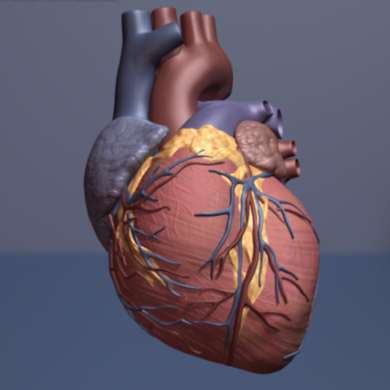Bacterial Fats, not dietary ones, may deserve the blame for heart disease

Heart disease and fatty clogs in the arteries go hand in hand. But new evidence suggests the fatty molecules might come not only from what you eat, but from the bacteria in your mouth, report UConn scientists in the 16 August issue of the Journal of Lipid Research. The research may explain why gum disease is associated with heart trouble.
Heart attacks and strokes are the crises we notice, but they result from a slow process of atherosclerosis, the hardening and clogging of the arteries with fatty substances called lipids. Immune cells stick to the walls of blood vessels, scavenge lipids, and multiply. The blood vessel walls inflame and thicken as the smooth muscle cells lining them change, swelling and dividing to create plaques, clogs, and warty growths called atheromas.
For a very long time, doctors and researchers assumed that the lipids came from eating fatty, cholesterol-rich food. But the research hasn't borne this out; some people who eat large amounts of the foods we thought were the sources of the fat, such as eggs, butter, fatty fish, and meat, don't necessarily develop heart disease.
UConn researchers believe they may have solved part of the puzzle. Using careful chemical analysis of atheromas collected from patients by a colleague at Hartford Hospital, they found lipids with a chemical signature unlike those from animals at all. Instead, these strange lipids come from a specific family of bacteria.
"I always call them greasy bugs because they make so much lipid. They are constantly shedding tiny blebs of lipids. Looks like bunches of grapes," on a bacterial scale, says Frank Nichols, a UConn Health periodontist who studies the link between gum disease and atherosclerosis. The bacteria, called Bacteroidetes, make distinctive fats. The molecules have unusual fatty acids with branched chains and odd numbers of carbons (mammals typically don't make either branched chain fatty acids or fatty acids with odd numbers of carbons).
Xudong Yao, a UConn associate professor of chemistry who analyzed the lipid samples, says the chemical differences between bacterial and human lipids result in subtle weight differences between the molecules. "We used these weight differences and modern mass spectrometers to selectively measure the quantity of the bacterial lipids in human samples to link the lipids to atherosclerosis," he says. "Establishment of such a link is a first step to mark the lipids as indicators for early disease diagnosis."
The marked chemical differences between Bacteroidetes lipids and the human body's native lipids may be the reason they cause disease, suggests Nichols. The immune cells that initially stick to the blood vessel walls and collect the lipids recognize them as foreign. These immune cells react to the lipids and set off alarm bells.
Nichols and Yao's team also showed that despite being non-native lipids, the Bacteroidetes lipids could be broken down by an enzyme in the body that processes lipids into the starting material to make inflammation-enhancing molecules. So the Bacteroidetes lipids have a double whammy on the blood vessels: the immune system sees them as a signal of bacterial invasion, and then enzymes break them down and super-charge the inflammation.
Despite the havoc they wreak, it's not the Bacteroidetes bacteria themselves invading. Usually these bacteria stay happily in the mouth and gastrointestinal tract. If conditions are right, they can cause gum disease in the mouth, but not infect the blood vessels. But the lipids they produce pass easily through cell walls and into the bloodstream.
The next step in the research is to analyze thin slices of atheroma to localize exactly where the bacterial lipids are accumulating. If they can show the Bacteroidetes-specific lipids are accumulating within the atheroma, but not in the normal artery wall, that would be convincing evidence that these unusual lipids are associated specifically with atheroma formation, and therefore contribute to heart disease.
More information: Reza Nemati et al, Deposition and hydrolysis of serine dipeptide lipids of Bacteroidetes bacteria in human arteries: relationship to atherosclerosis, Journal of Lipid Research (2017). DOI: 10.1194/jlr.M077792




















